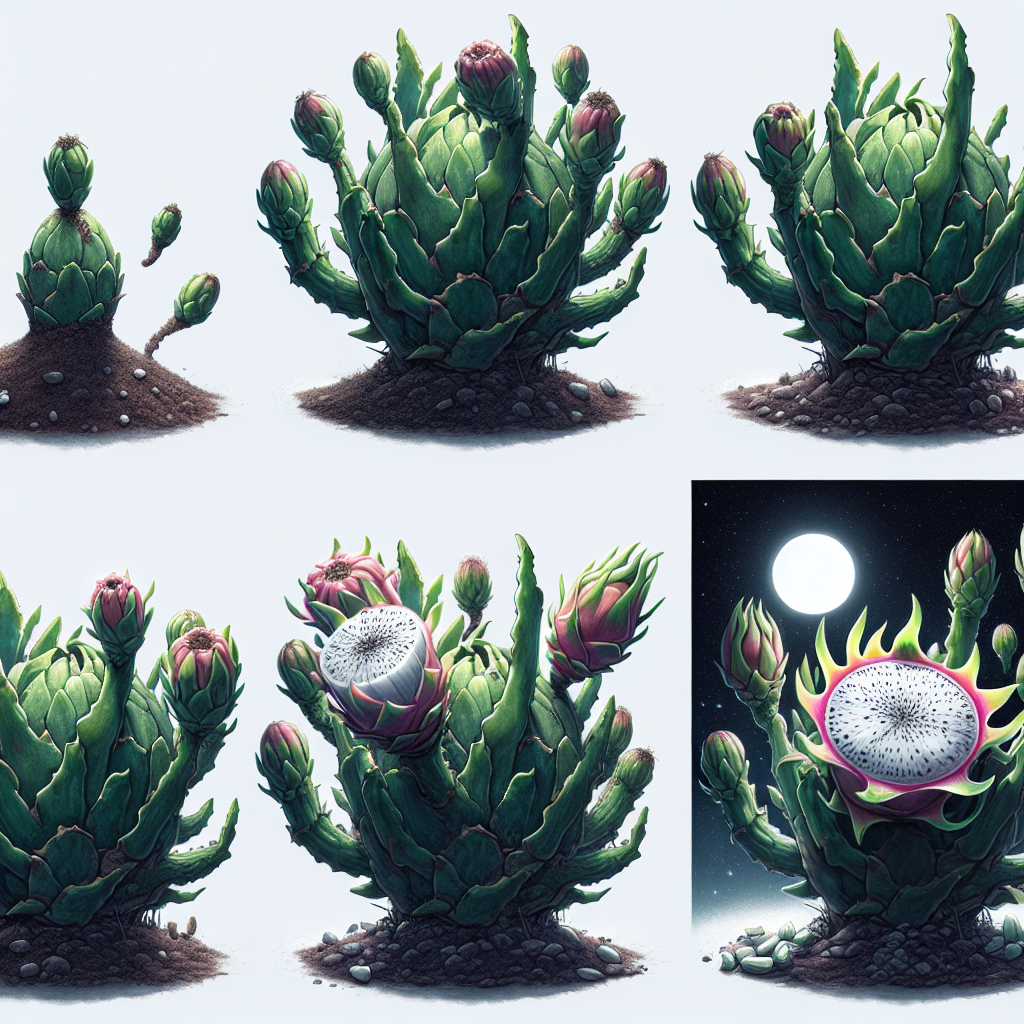
How do dragon fruit grow
The Mysterious Journey of Dragon Fruit: How Do They Grow?
Dragon fruit, also known as pitaya, is a tropical fruit that not only captivates the eye with its vibrant colors but also boasts an impressive nutritional profile. While the taste and appearance of this exotic fruit are often enough to pique one's interest, many are left wondering, how do dragon fruit grow? In this article, we will dive into the fascinating growth process of dragon fruit, the ideal conditions for its cultivation, and tips for growing it yourself.
Understanding the Dragon Fruit Plant
Dragon fruit comes from the cactus family, specifically the species Hylocereus or Selenicereus. These cacti are native to Central America and parts of South America but have found their way around the globe, adapting well to various climates. Before we explore how do dragon fruit grow, let’s understand the main components of this unique plant:
- Stems: The dragon fruit plant has thick, green, segmented stems that can grow up to 20 feet (6 meters) in height when supported properly.
- Flowers: The plant produces large, white flowers that bloom at night and have a sweet fragrance.
- Fruit: The fruit itself, which resembles a dragon due to its spiky exterior, can be white or red inside.
The Growing Conditions for Dragon Fruit
To maximize the potential of growing dragon fruit, understanding its environment is essential. Here are the critical factors that influence the growth of this exotic cactus:
- Climate: Dragon fruit thrives in warm, tropical climates, ideally with temperatures ranging from 65°F to 100°F (18°C to 38°C). Frost can severely damage the plant.
- Soil: A well-draining soil is crucial. A mix that includes sand, compost, and organic matter is ideal to prevent root rot.
- Sunlight: Dragon fruit plants love sunlight. Ideally, they need at least six hours of direct sunlight each day for optimal growth.
- Watering: While dragon fruit is a drought-tolerant plant, regular watering is necessary during the growing season. However, the frequency should be adjusted according to rainfall and the plant's growth stage.
Growth Stages of Dragon Fruit
Understanding the how do dragon fruit grow process requires us to explore each stage of their lifecycle:
1. Planting
Dragon fruit can be grown from seeds or cuttings. If using seeds, they need to be soaked for 24 hours before planting to enhance germination. Cuttings should be placed in moist soil and kept in a shaded area until roots develop.
2. Establishment
Once planted, the baby plants should be watered lightly to avoid over-saturation. They usually take about a year to establish themselves and start producing stems.
3. Growth
During the growth phase, the stems will grow quickly, requiring support as they can become heavy. Trimming and training the stems are essential for healthier growth and easier harvesting later.
4. Flowering
After 6-12 months of growth, mature plants will begin to flower, producing large, fragrant blooms that are best pollinated at night by moths and other nocturnal creatures.
5. Fruit Development
The fruit starts developing only after successful pollination of the flowers. It usually takes 30-50 days for the fruit to mature after pollination. The color will change from green to a vibrant pink or yellow when ready for harvest.
Harvesting Dragon Fruit
Knowing when to harvest is key to enjoying delicious dragon fruit. Here are the indicators that your dragon fruit is ready:
- Color: The fruit should be a vibrant pink or yellow (depending on the variety) with green scales that have receded.
- Firmness: The fruit should yield slightly to gentle pressure; if it’s too hard, it’s not ripe yet.
- Time: Harvest usually occurs 30-50 days after flowering.
Pest and Disease Management
Like all plants, dragon fruit is susceptible to pests and diseases. Awareness and preventive measures can help ensure a healthy harvest:
Common Issues
- Mealybugs: Small, white insects that can be removed by hand or with insecticidal soap.
- Root Rot: Often caused by overwatering; ensure well-draining soil to prevent this issue.
- Fungal Infections: Can be managed with appropriate organic fungicides.
Tips for Cultivating Dragon Fruit
For those keen on trying to grow dragon fruit at home, here are some tried-and-true tips:
- Support Structure: Build a sturdy trellis or support system, as dragon fruit plants can grow quite tall.
- Prune Regularly: Regular trimming can stimulate growth and improve air circulation around the stems, reducing disease risk.
- Choose the Right Variety: Depending on your climate, select the varieties that are best suited to your region.
- Be Patient: Growing dragon fruit can take time, but the payoff is well worth it with each beautiful fruit you harvest!
Conclusion: The Art of Growing Dragon Fruit
Understanding how do dragon fruit grow not only allows growers to cultivate this unique fruit with confidence but also fosters appreciation for the beauty of nature’s processes. Dragon fruit offers a refreshing taste, vibrant color, and numerous health benefits, from antioxidant properties to its ability to aid in digestion.
If you’re a gardening enthusiast or simply a lover of exotic fruits, consider adding dragon fruit to your organic garden. With the right knowledge and care, you’ll be rewarded with a stunning, bountiful harvest and the joy of nurturing this mesmerizing plant from seed to fruit.
"Gardening adds years to your life and life to your years." – Unknown
By Guest, Published on September 20th, 2024